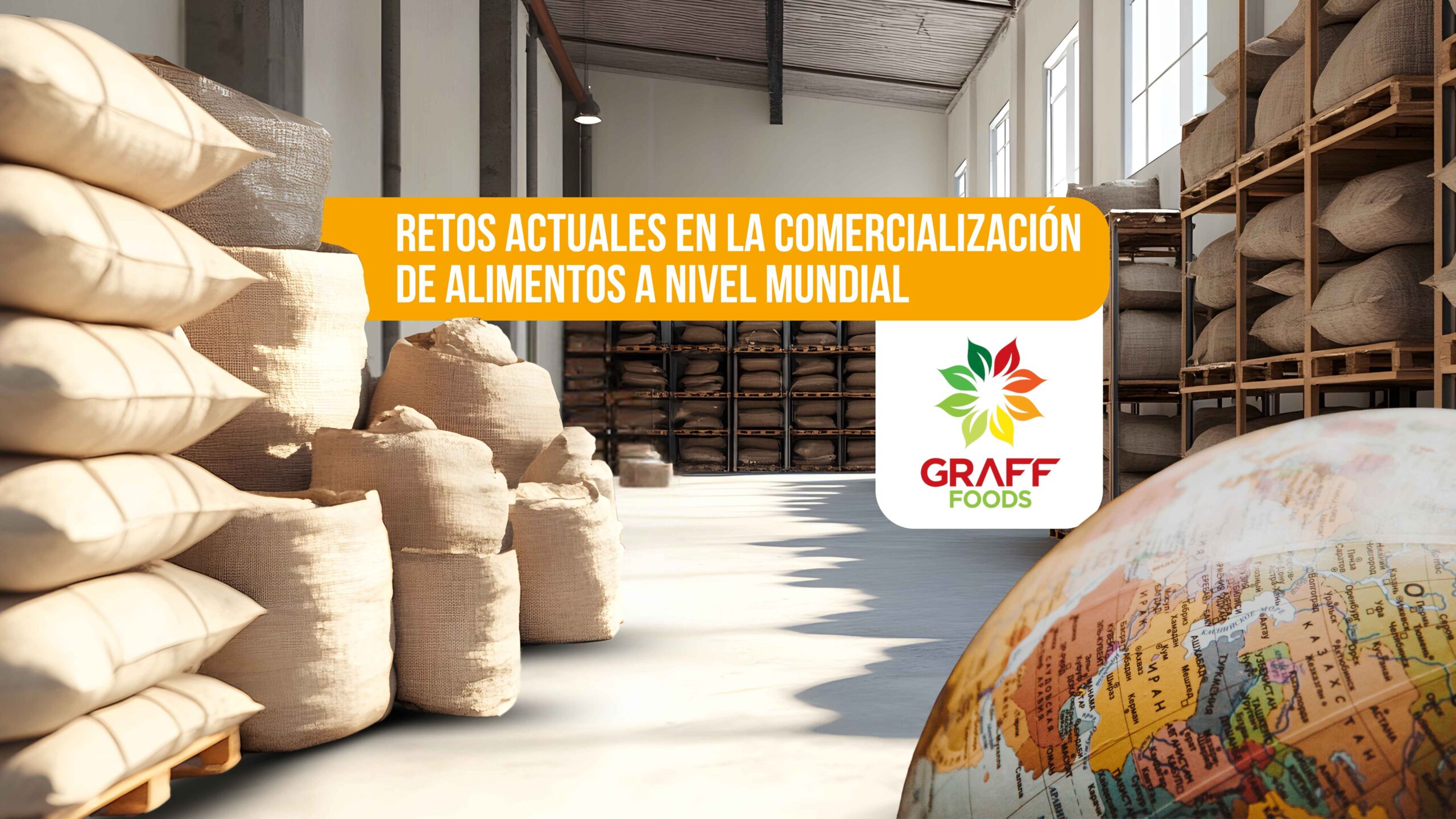The food industry is constantly evolving and faces increasingly complex challenges that directly impact global food commercializationFactors such as climate change, price volatility, trade regulations, and logistical crises continue to reshape the landscape of food trade, affecting not only the availability of products but also their cost and distribution. These disruptions create significant challenges for businesses across the supply chain, from producers to retailers, requiring them to develop more adaptive and resilient strategies.
At the same time, the demand for food continues to rise, particularly in emerging markets where population growth and urbanization are driving significant increases in consumption. However, this demand is met with new obstacles, such as rising production costs, stricter trade barriers, and growing environmental concerns. Additionally, geopolitical tensions and supply chain bottlenecks have further tested the ability of companies to adapt to a rapidly changing business environment.
What are the biggest obstacles affecting today? How do these challenges impact each link in the supply chain? What solutions are leading companies implementing to navigate these difficulties successfully? In this article, we will explore in depth the primary challenges shaping the industry and examine global food commercialization the key strategies that businesses can adopt to overcome them.
The Impact of Climate Change on Food Production and Commercialization
Extreme weather conditions have created serious problems for global food commercializationProlonged droughts, torrential rains, and unusual temperature fluctuations affect agricultural production and the availability of certain products. This leads to a reduction in supply, which in turn results in price increases and distribution challenges.
Companies must adapt by implementing strategies to mitigate these effects. Diversifying suppliers and investing in regenerative agriculture can help maintain supply chain stability.
Pests and Diseases: A Persistent Threat
Pests and diseases not only affect food production but also have a direct impact on exports and imports. Some countries have imposed stricter regulations to prevent the spread of these issues, complicating global food commercialization.
Biological control methods, crop monitoring, and quality certifications have become essential tools for maintaining competitiveness in the sector.
Price Volatility: A Constant Challenge

Food prices fluctuate due to multiple factors, including production costs, transportation expenses, supply chain disruptions, and geopolitical tensions. In recent years, the rising costs of fertilizers and energy have affected the profitability of many companies.
To tackle this issue, businesses need procurement strategies that secure competitive prices through long-term contracts. Additionally, market intelligence and data analysis can help anticipate shifts in consumer trends.
Food Loss and Waste: A Global Issue
A significant percentage of food is wasted at different stages of the supply chain, from production to final consumption. global food commercialization must focus on reducing waste through improved storage and distribution practices.
Companies that implement traceability technologies and optimize logistics can reduce losses and increase profitability. Investing in efficient processes is one of the most effective solutions to prevent waste.
Trade Regulations and Barriers in Import and Export
International food trade is subject to regulations that can complicate import and export processes. Sanitary certifications, quality control measures, and tariff restrictions influence how quickly products reach their destinations.
To ensure efficient global food commercialization , it is crucial to work with suppliers who meet each country’s requirements and have advisors who facilitate compliance with trade regulations.
The Role of Technology in Food Commercialization
Digitalization has transformed the way food is marketed. Tools such as blockchain enhance traceability and ensure transparency throughout the supply chain. Additionally, big data analytics help predict demand fluctuations and optimize distribution.
Automation and artificial intelligence have enabled businesses to cut costs and improve efficiency in global food commercializationThe adoption of these technologies continues to grow as companies seek greater operational agility.
Geopolitical Conflicts and Their Impact on Global Distribution
Tensions between countries can lead to trade restrictions that affect the availability of certain products. Embargoes, sanctions, and modifications in trade agreements have impacted food imports and exports across various regions.
To prevent supply chain disruptions, companies must diversify their sourcing strategies and establish strategic partnerships with suppliers in multiple markets. This approach minimizes risks and ensures stability in global food commercialization.
Consumer Trends and Market Adaptation

Consumer habits have evolved, with a growing preference for healthier, sustainable, and ethically sourced products. This shift has encouraged businesses to innovate in their product lines and commercialization strategies.
Companies that successfully adapt to these changing demands are better positioned for growth. Transparency in labeling and a commitment to sustainability play a crucial role in purchasing decisions and market acceptance.
Conclusion
The global food commercialization faces multiple challenges, from climate change and price volatility to trade regulations and shifting consumer preferences. However, businesses that implement effective strategies can overcome these obstacles and ensure a stable supply.
Building strong partnerships, embracing new technologies, and expanding into diverse markets are essential actions for staying competitive in the industry.
Are you looking to optimize your import or distribution strategy? Explore the solutions that Graffoods offers to ensure a more efficient and profitable global food commercialization .

